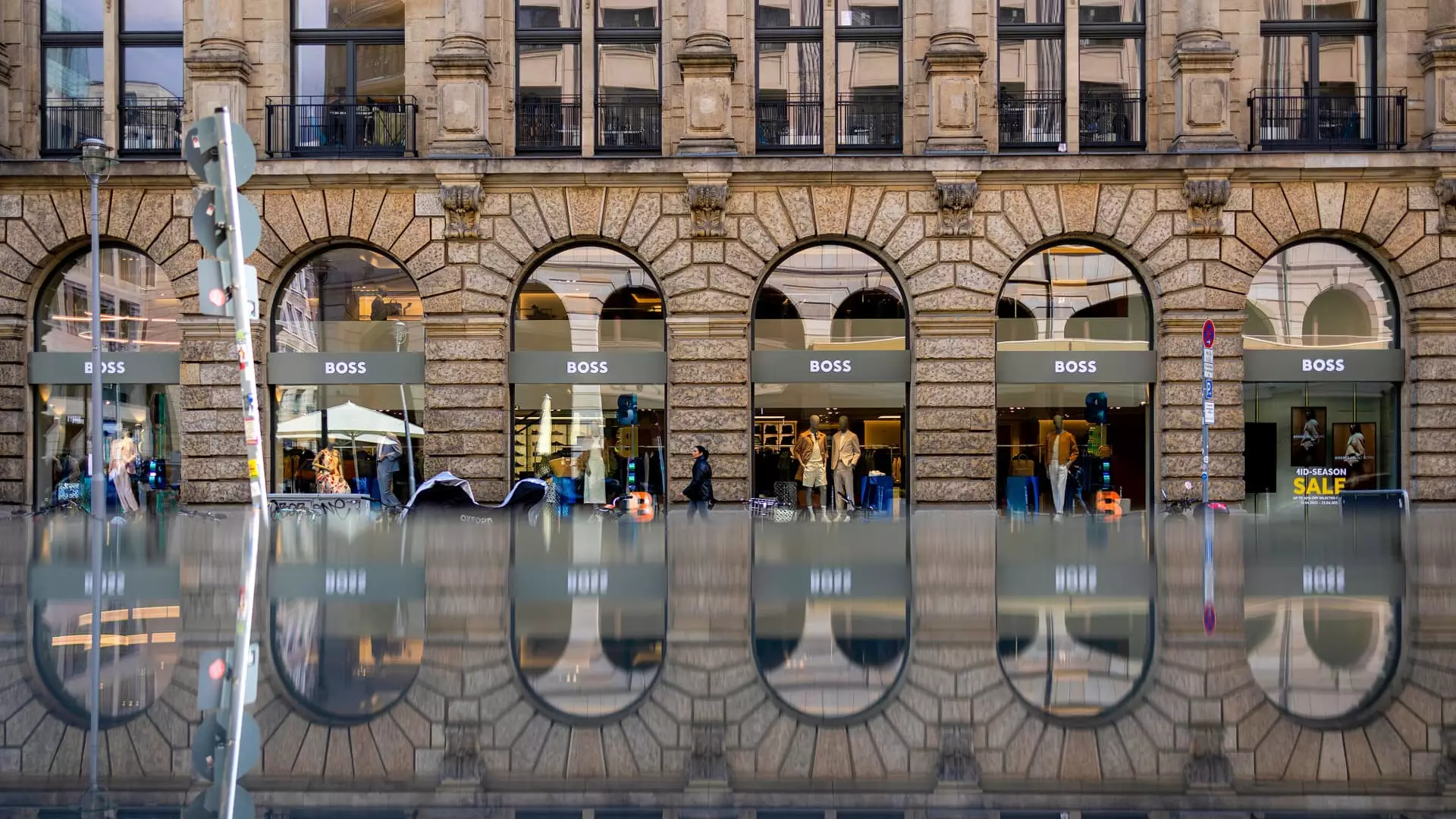In a world gripped by economic uncertainty, with fluctuating markets and tariff disputes casting shadows across the retail landscape, Hugo Boss has emerged as a beacon of tenacity. The luxury fashion retailer recently announced its first-quarter sales, and although the figures look less than rosy, they weren’t as disastrous as analysts had anticipated. While a 2% decline in revenues, landing at 999 million euros (approximately $1.13 billion), might seem alarming, the mere fact that it surpassed estimates made by experts captures a complex fabric of hope amid distress.
It’s poignant that shares surged by as much as 8.8% following the announcement, reflecting an intriguing contradiction of investor sentiment. The optimistically buoyant market reaction signals that even minor victories can instill a sense of confidence among stakeholders. However, this reaction might also stem from a desperate need to find glimmers of hope in bleak economic forecasts. Investors appear willing to overlook the significant drop in demand stemming from the Asia-Pacific region—most notably, China.
The China Conundrum: A Market in Meltdown?
Hugo Boss’s struggles in the Asian market cannot be underestimated. The company explicitly pointed to “ongoing subdued consumer demand in China,” painting a grim picture for the luxury retail sector in a country previously viewed as a major growth engine. It’s a stark reminder of how swiftly fortunes can shift in the volatile world of global trade. CEO Daniel Grieder’s comments on uncertain consumer outlooks underscore a growing discontent among Chinese shoppers, who are increasingly feeling the weight of rising costs and shifting priorities.
China’s slowing economy and a heightened preference for local brands make it hard for an international luxury giant to cement itself firmly in the market. The economic ramifications ripple through to other regions too, particularly the United States, Hugo Boss’s most significant market, contributing approximately 15% of group revenues. One can’t help but wonder: is this the beginning of a broader pattern where once-coveted luxury brands become mere shadows of their former selves due to changing consumer preferences and market dynamics?
The Ticking Time Bomb of Tariffs
The tumultuous landscape of U.S. trade policies further complicates matters for Hugo Boss. The looming specter of tariffs encroaches upon global supply chains, casting a pall over investor sentiment and consumer confidence. As other consumer goods companies grapple with the potential specter of price hikes, Hugo Boss is not immune from the ramifications of a trade war that seems to accelerate daily. One has to question the durability of this business model, especially when all signs point to rising production costs and a dampening of retail enthusiasm.
Grieder’s cautious approach of redirecting imports from China and optimizing the supply chain is laudable but speaks to a larger systemic issue: how long can a brand sustain itself while constantly outsourcing risks and failures to external markets? The ongoing uncertainty surrounding tariff negotiations is akin to living in a house with a ticking time bomb—all it takes is one miscalculated move to send everything toppling down.
Strategic Shifts: Redefining the Brand’s Identity
Despite the challenges, there’s a flicker of hope in Hugo Boss’s strategic overhaul. Grieder’s ambition to broaden the brand’s appeal by diversifying product offerings and revamping store formats should not go unnoticed. In an era where consumer preferences evolve rapidly, the ability to engage younger demographics is a necessary survival tactic. Yet, the company’s performance in other areas, such as womenswear, exposes critical gaps in its strategy. The absence of standout products in that category suggests a lack of cohesive vision.
The idea of acquiring an established female fashion brand is an intriguing proposition, but one must question: can mere acquisition truly stimulate growth when the underlying brand ethos is faltering? Hugo Boss can’t afford to merely play catch-up in categories where it has historically lagged behind more innovative competitors.
In a landscape teeming with uncertainty, Hugo Boss’s narrative encapsulates a rich tapestry woven with tension, resilience, and a struggle for reinvention. The company’s journey highlights a critical lesson for the luxury retail sector at large: in a world of shifting sands, complacency is akin to inviting disaster. It remains to be seen whether the path Hugo Boss is carving will lead to a thriving future or simply serve as a sad echo of a brand lost in translation.

